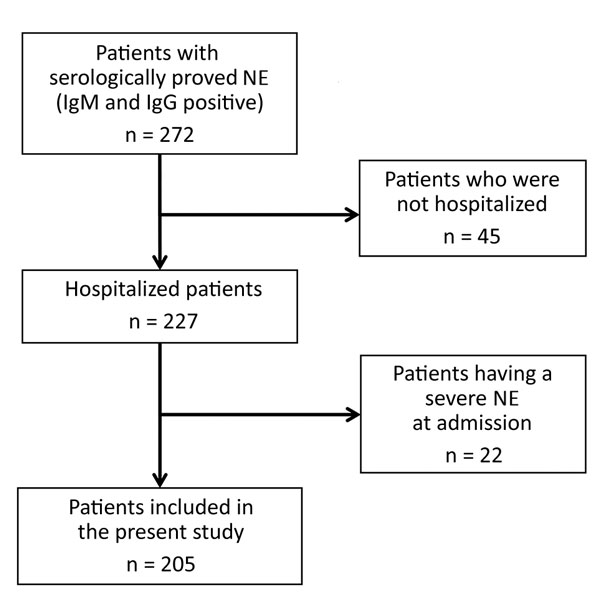Volume 24, Number 6—June 2018
CME ACTIVITY - Research
Bioclinical Test to Predict Nephropathia Epidemica Severity at Hospital Admission
Figure 1

Figure 1. Determination of study population used to derive a bioclinical score that enables identification of patients more likely to develop severe NE. Patients were those living in Ardennes Department, France, who were hospitalized for serologically proven NE during January 2000–December 2014. NE, nephropathia epidemica.
Page created: May 15, 2018
Page updated: May 15, 2018
Page reviewed: May 15, 2018
The conclusions, findings, and opinions expressed by authors contributing to this journal do not necessarily reflect the official position of the U.S. Department of Health and Human Services, the Public Health Service, the Centers for Disease Control and Prevention, or the authors' affiliated institutions. Use of trade names is for identification only and does not imply endorsement by any of the groups named above.